THE CORONAVIRUS PANDEMIC
/arc-anglerfish-arc2-prod-dmn.s3.amazonaws.com/public/GN3YFWLYFVDWZBZE2KENJQQHZY.jpg)
The Cardinal Climax Years
Worldwide Coronavirus Pandemic Spreads To 110 Nations & Territories
How Plain Soap Kills the Coronavirus
&
Astromet Prediction of Future Spread of COVID-19
Plus,
Worldwide Financial Markets Plummet
Also,
U.S. President Trump restricts Travelers From European Union For 30 Days
&
American Actor Tom Hanks & Actress Wife Rita Wilson Confirm They've Been Infected with COVID-19
National Basketball Association Suspends Season As All-Star Player Contracts Coronavirus
Iran Struggles to Contain the Virus
Plus,
Italy Shuts Down Entire Country In Dramatic Virus Control Measures
&
Is Coronavirus Causing Worry in Central Asia's Turkmenistan?
And,
Shocking Emails:
Norwegian Cruise Ship Company Pressures Sales Team To Mislead Customers About Coronavirus
Theodore White, mundane Astrolog.sci
If you are reading this in early March, then you will already have heard of the spread of the Wuhan coronavirus worldwide and how it continues to powerfully stress global financial markets; nations, their governments as well as regional and local health agencies - to the brink.
For months, I have been urging those who read my forecasts to refrain from extended travel and gathering in groups, at conferences and in crowds.
For over a dozen years I have forecasted and warned of the emergence of global cooling and the Sun's Grand Minimum.
The Sun is reducing its output as it enters a deep minimum through the 2020s, 2030s and 2040s. as I've long forecasted.
The effects on the Earth's climate and weather, as well as on agriculture in particular and society in general will be very significant - including the spread of epidemics.
It is my contention that as the Earth nears the Vernal equinox with increase sunlight for the northern hemisphere along with warmer temperatures and humidity, the transmissibility of the Wuhan coronavirus will lessen; though there will still be lingering cases in regions that are colder and wetter than normal.
The elderly at at particular risk through all of March, April and into May and June 2020 in regions that warm up less from early to mid-spring.
Before I get back to the Sun and the overall climate/weather connection to the spread of the Wuhan coronavirus, or SARS-CoV-2, what is also called COVID-19.
Let's take closer look at the regions of the world where the virus is likely to spread further in the coming weeks and months ahead, but first, the reason why washing your hands with soap is so important...
How Plain Soap Kills the Coronavirus
The reason for good hygiene is that washing one's hands is the key to prevention of not only catching the Wuhan coronavirus - but also in passing it on and spreading it to others.
To maintain proper health and hygiene - especially during Mercury's long transit in Pisces from February into April 2020, it is vital to wash your hands with soap.
In the wake of the Wuhan coronavirus, I have been stressing this for months now, because one of the simplest things people can do to avoid becoming sick and passing on the viral pathogen to others is to wash their hands with soap.
This was covered recently in Vox Magazine and so let's see why I am republishing it here so readers of Global Astrology can remain healthy, wealthy and wise...
"As Covid-19 cases in the United States alone surge to 2,174 as of Saturday, March 14th, and fear of the Wuhan coronavirus sweeps the globe, there’s one consumer product critical to our great national battle to “flatten the curve,” or slow the epidemic: soap. Humble, ancient, cheap, effective soap.
Respiratory viruses - like the novel coronavirus, the flu, and the common cold - can be spread via our hands.

If someone is sick, a hand can touch some mucus and viral particles will stick to the hand.
If someone is well, hands act like sticky traps for viruses.
We can pick up droplets that contain the virus, and they’ll stay on our hands, and perhaps enter our bodies if we touch our hands to our faces.
That’s why our hands are the front lines in the war against COVID-19.
The Centers for Disease Control and Prevention (CDC) recommends washing hands with soap and water as the top way to clean our hands.
“But if soap and water are not available, using a hand sanitizer with at least 60% alcohol can help,” the CDC says.
The CDC prioritizes soap.
Yet, per news reports, people have been stocking up and hoarding sanitizer.
The sanitizer situation is growing absurd:
The Atlantic reported on a man who sold a bottle of Purell on eBay for $138. Hand sanitizer containing over 60% alcohol works against Covid-19 and is a good option when you’re not near a sink.
But it’s getting harder to find than a hypodermic needle in a haystack.
Sanitizer might feel like a modern-day, scientific, and more clinical upgrade to soap.
But I’m here to tell you that soap - all sorts of it:
Be it liquid, solid, honeysuckle-scented, the versions inexplicably only marketed to men or women - is badass - and even more routinely effective than hand sanitizer.
We all should be excited to use it - as much as possible.
That’s because when you wash your hands with soap and water, you’re not just wiping viruses off your hands and sending them down the drain.
You’re actually annihilating the viruses - rendering them harmless.
Soap “is almost like a demolition team breaking down a building and taking all the bricks away,” says Palli Thordarson, a chemistry professor at the University of New South Wales.
Soap is common phrase for what chemists call 'amphiphiles.'
Amphiphiles are molecules that have a dual nature.
One end of the molecule is attracted to water and repelled by fats and proteins.
The other side of the molecule is attracted to fats and is repelled by water.
If you looking out for product labels, the most common soap is 'sodium laureth sulfate - it’s a detergent that’s often mixed with other chemicals to both clean our hands but not damage our skin.
It’s this dual-nature chemical construction that makes soap so effective.
“When you buy a conventional soap, it consists of a mixture of these amphiphiles,” Thordarson explains. And they all do the same thing.
Think about what happens when you pour some olive oil into water.
The oil pools up in a mass that floats.
“That’s because fats don’t mix with water,” Thordarson says.
But mix some soap into the oil and water and the oil will disperse.
Basically, that happens because the soap is attracted to the grease, via its fat-loving side, but then tears it up, pulling it into the water via its water-loving side.
It’s a one-two punch.
Surround the oil particles and move them away from one another.
Now, lucky for us, coronaviruses are a bit like the oil mentioned in the above example: bits of genetic information — encoded by RNA — surrounded by a coat of fat and protein.
Thordarson likes to call viruses “nano-sized grease balls.”
And grease balls, no matter the size, are the exact type of thing soap loves to annihilate.
Why does soap work so well on the SARS-CoV-2, the coronavirus and indeed most viruses? Because it is a self-assembled nanoparticle in which the weakest link is the lipid (fatty) bilayer.
The soap takes care of the virus much like it takes care of the oil in the water.
“It’s almost like a crowbar; it starts to pull all the things apart,” Thordarson says.
One side of the soap molecule (the one that’s attracted to fat and repelled by water) buries its way into the virus’s fat and protein shell.
Fortunately, the chemical bonds holding the virus together aren’t very strong, so this intrusion is enough to break the virus’s coat.
In effect, when you use soap, you pull the coronavirus apart as you make it soluble in water - and it disintegrates.
Then the harmless shards of virus get flushed down the drain.
And even if it the soap doesn’t destroy every virus, you’ll still rid them from your hands with soap and water, as well as any grease or dirt they may be clinging to.
Soap will also wash away bacteria and other viruses that may be a bit tougher than coronavirus - and harder to disintegrate.
The trick is this all takes a little time to happen, and that’s why you need to take at least 20 seconds to wash your hands.
First off, your skin is wrinkly, and it takes time for soap to penetrate into all the tiny folds and demolish the viruses that lurk within.
Then the soap needs a few moments to do its chemical work.
“You do need a bit of time for all the soap to interact back and forth with the virus particle,” he says. Twenty seconds should do the trick just fine.
Alcohol, the main ingredient in hand sanitizer, can destroy viruses, too.
Sanitizers “actually work in a similar way, the alcohol molecules are somewhat amphiphiles,” he says.
The thing is, you need a very high concentration of alcohol to achieve the same effect. (Chemicals called quaternary ammonium compounds - the main ingredient in Lysol - kill viruses too - but can be a bit harsher on the skin.)
The CDC recommends a sanitizer that’s 60 percent alcohol, so beware of sanitizers or wipes on the market that don’t meet this standard (or contain alcohol at all.)
Hand sanitizer is useful, but it can fail in un-ideal situations.
If your hands are wet or sweaty when you use the sanitizer, that can dilute it and diminish its effectiveness.
Also, sanitizer doesn’t clean your hands of sticky grease to which viruses can also adhere.
“Soap doesn’t really fail easily,” Thordarson says.
It doesn’t really matter the formulation of soap, either.
You don’t need 'antibacterial soap' — which the Food and Drug Administration advises to skip altogether due to a lack of evidence of its usefulness.
And you don’t need a super-harsh detergent like you’d put in your dishwasher or laundry machine.
Simple soap works fine.
As long as you give it a little bit of time, it will do its job.
All of this, at least, makes me excited to wash my hand more.
As I’m washing with soap and water and counting to 20, I’m going to imagine a battle being waged on the nano-scale in the teeny-tiny folds of my skin.
The soap is charging in, sticking to viruses (as well as dirt and other grease) and tearing them apart in brutal, heroic fashion.
It’s almost like the Avengers, but better.
Because it’s real.
"And it can help stop the spread of this outbreak."
Astromet Prediction of Future Spread of COVID-19
Forecast by Theodore White, astromet.sci
It is the weather that will determine how the spread of the Wuhan Coronavirus will end.
I have been stating for two months that I expect that with the arrival of the Vernal Equinox, increased sunlight, warming temperatures and rising humidity that the Wuhan Coronvirus will come to deactivate.
However, in the meantime, through March and into April 2020, there will be major events causing the closure of numerous events affecting tens of millions of people around the world to stem the transmissibility and spread of COVID-19.
A number of weather/climate forecasters (including yours truly) as well as clinicians, veterinarians, physicians, public health experts and virologists have been working independently and together in groups and teams to get a handle on COVID-19.
Developing an official vaccine for the Wuhan coronavirus will take at least 18 months; but there are those of us who are working together and independently to cut down that time span with the help of powerful computers and artificial intelligence find a cure.
In the meantime, know that the climate and weather conditions play a major role in the transmissibility and spread of the Wuhan coronavirus.
Here is an abstract paper based on the works of team members and the corresponding author Mohammad Sajadi, MD, who is an Associate Professor at the Institute of Human Virology in Maryland.
'"A significant number of infectious diseases display seasonal patterns in their incidence, including human coronaviruses. We hypothesize that SARS-CoV-2 does as well.
To date, Coronavirus Disease 2019 (COVID-19) caused by SARS-CoV-2, has established significant community spread in cities and regions only along a narrow east west distribution roughly along the 30-50 N” corridor at consistently similar weather patterns (5-11OC and at 47-79% humidity).
There has been a lack of significant community establishment in expected locations that are based only on population proximity and extensive population interaction through travel.
We have proposed a simplified model that shows a zone at increased risk for COVID-19 spread.
Using weather modeling, it may be possible to predict the regions most likely to be at higher risk of significant community spread of COVID-19 in the upcoming weeks, allowing for concentration of public health efforts on surveillance and containment.
Many infectious diseases show a seasonal pattern in their incidence. An onerous burden for health care systems around the globe - influenza is the characteristic example.
The influenza virus shows significant seasonal fluctuation in temperate regions of the world but nevertheless displays less seasonality in tropical areas.
Despite the multitude of possible mechanisms proposed to explain this variation, our current understanding of this phenomenon is still superficial.
Coronavirus Disease 2019 (COVID-19) caused by SARS-CoV-2, initially came to attention in a series of patients with pneumonia of unknown etiology in the Hubei province of China, and subsequently spread to many other regions in the world through global travel.
Because of geographical proximity and significant travel connections, epidemiological modeling of the epicenter predicted that regions in Southeast Asia, and specifically Bangkok would follow Wuhan, and China in the epidemic.
However, the establishment of community transmission has occurred in a consistent east and west pattern.
The new epicenters of virus were all roughly along the 30-50 degrees North Zone - to South Korea, Japan, Iran and Northern Italy.
The new areas includes significant community transmission in the Pacific Northwest of the United States and also in France.
Notably, during the same time, COVID-19 failed to spread significantly to countries immediately south of China.
The number of patients and reported deaths in Southeast Asia is much less when compared to more temperate regions."'
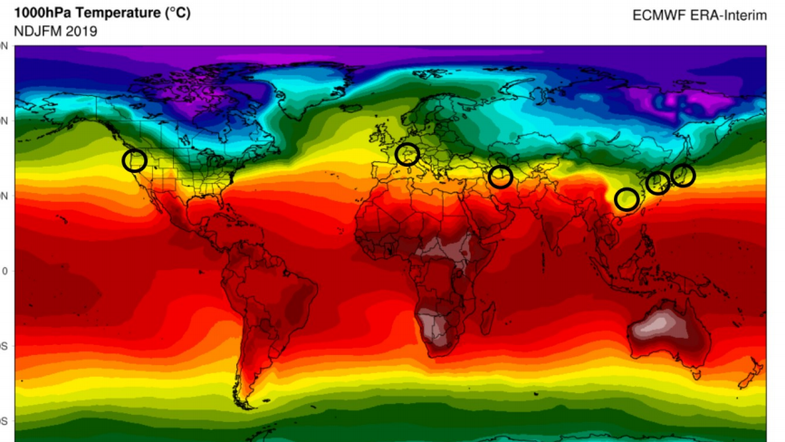
World temperature map from November 2018 to March 2019. The color gradient indicates 1000hPa temperatures in degrees Celsius. The Black Circles represent countries with significant community transmission (> 6 deaths as of 3/5/3019).
Further analysis using 2-meter (2m) temperatures from 2020 rather than hPa temperatures yields similar results.
In the months of January 2020 in Wuhan through February 2020 in the other affected there is a striking similarity in the measures of average temperature (5-11oC) and relative humidity (RH, 47-79%.)
In addition to having similar average temperature, humidity, and latitude profiles, these locations also exhibit a commonality in that the timing of the outbreak coincides with a nadir in the yearly temperature cycle, and thus with relatively stable temperatures over a more than a one month period of time. In addition, none of the affected cities have minimum temperatures going below 0-degrees Celsius.
Cities with Wide Community Spreading of COVID-19
Wuhan, China
Tokyo, Japan
Qom, Iran
Milan, Italy
Daegu, South Korea
Seattle, Washington, USA
Mulhouse, France

Global Temperature Map
January/February 2020. Color gradient indicates 2- meter temperatures in degrees Celsius are based on data from the ECMWF ERA-5 reanalysis. The white circles represent countries with significant community transmission (> 6 deaths as of March 5, 2020) and red isolines areas with temperature between 5-11oC.
Large Cities Predicted to be at risk March-May 2020
London, United Kingdom
Manchester, United Kingdom
London, United Kingdom
Prague, Czechoslovakia
Hamburg, Germany
Vancouver, British Columbia
New York City, USA
Warsaw Poland
Glasgow, Scotland
Kiev, Ukraine
St. Louis, Missouri
Beijing, China
The association between temperature in the cities affected with COVID-19 deserves special attention. There is a similarity in the measures of average temperature (5 to 11 degrees Celsius and relative humidity (47% to 79%) in the affected cities and known laboratory conditions that are conducive to coronavirus survival (4oC and 20-80% RH).9
Temperature and humidity are also known factors in SARS-CoV, MERS-CoV and influenza survival.10 Furthermore, new outbreaks occurred during periods of prolonged time at these temperatures, perhaps pointing to increased risk of outbreaks with prolonged conditions in this range.
Finally, the temperatures in these cities did not dip below 0-degrees Celsius pointing to a potential minimum range which could be due to avoidance of freeze-thaw cycles that could affect virus viability or other factors (at least one human coronaviruses tested is freeze-thaw resistant.)
All of these point to a potential direct relation between temperature and SARS-CoV-2 environmental survival and spreading.
This hypothesis can be tested in experimental conditions similar to work that has been done before and with environmental sampling and testing from areas of ongoing infection.
Given the temporal spread among areas with similar temperature and latitude, some predictions can tentatively be made about the potential community spread of COVID-19 in the coming weeks.
World temperature map for seasonal March-April showing at risk zones for COVID-19. Color gradient indicates 2M temperatures in degrees Celsius. Tentative zone at risk for significant community spread in the near-term include land areas within the green bands; outlined in dark black (showing 5-11oC zone based on 2019 data) and will change based on actual average temperatures during the coming March/April 2020 time period.
Using the regional seasonal temperature data for the months of March and April; the risk of community spread could be predicted to affect areas just north of the current areas at risk.
These include - from East to West
Manchuria
Central Asia
The Caucuses
Eastern Europe
The British Isles
The Northeastern & Midwestern U.S.
British Columbia, Canada
However, this simplified analysis does not take into account the effect of warming temperatures.
The marked drop in cases in Wuhan, China could well be linked to corresponding recent rising temperatures there.
In the coming two months of April and May 2020 temperatures will rise dramatically across many areas in the Northern Hemisphere.
However, areas to the north which develop temperature profiles that may now overlap the current areas at risk only transiently as they rapidly warm (with possible exception of areas such as the Northwestern United States and British Columbia, which can show prolonged cyclical nadirs.
Furthermore, as the virus moves further north it will encounter less human population densities.
THE SUN'S GRAND MINIMUM, GLOBAL COOLING & PANDEMIC DISEASES
Those who have read my Astromet forecasts on global cooling and my forecast on the Sun's Grand Minimum will already know that the majority of pandemic influenza outbreaks since the year 1700 were associated with the minima and maxima of sunspot numbers that are linked to the 11 and 22-year solar cycle.
The Sun's Grand Minimum.
It is the Sun that causes all climate and weather changes on Earth.
In fact, did you know that 74% of influenza pandemics and epidemics since 1700 occurred at, or within a single year of the peak or trough in sunspot numbers - increasing to 89 percent within two years?
Did you also know that three previous grand minima of the Sun - the Sporer Minimum (1450-1550) the Maunder Minimum (1650-1700) and the Dalton Minimum (1800-1830) - all recorded a preponderance of pandemics ranging from Small Pox, the English Sweats, the Plague, Cholera and Influenza?

Based on sunspot numbers and the Sun's Grand Minimum, we are approaching a very high risk several decades for pandemic outbreaks of coronaviruses.
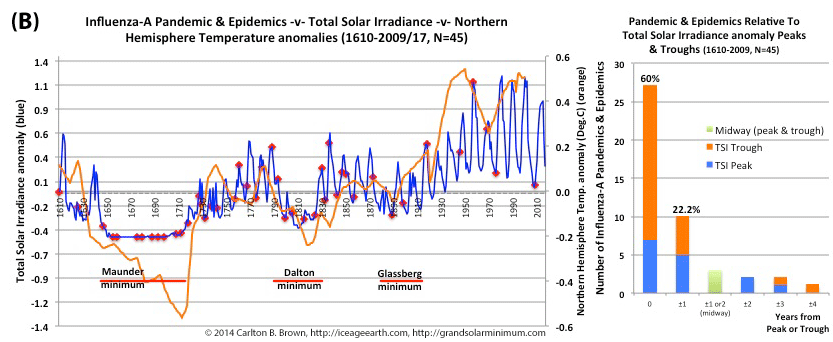 It is vital that all populations, nations and their government get this because there is no geopolitical negotiation with the power of the Sun and planets. What they deal out is what everyone will get.
It is vital that all populations, nations and their government get this because there is no geopolitical negotiation with the power of the Sun and planets. What they deal out is what everyone will get.
Our only power is in forecasting and preparation.
Know that more than half of all the global pandemics since 1600 occurred in the trough of the Sun's Grand Minimum phases and we have already just entered another one, as I have long forecasted.
The influenza-A viruses we can expect are highly pathogenic avian influenza-A H7N9 and H5N1.
Since 1997 other animal influenza-A viruses have also killed humans and will continue to pose very serious risks into the 2020s, 2030s and 2040s.
H7N9 is killing between 25 to 40 percent of all humans infected.
Human coronaviruses (HCoV-229E, HCoV-HKU1, HCoV-NL63, and HCoV-OC43) that usually cause the common cold and its symptoms; have been shown to display strong winter seasonality between the months of December through April, but are undetectable in summer months in temperate regions.
I expect COVID-19 to diminish greatly by mid-spring in the northern hemisphere above 30-degrees north however, the virus will require close monitoring of the southern hemisphere as their autumn and winter seasons approach in 2020.
After all is said and done - much work will need to be accomplished to restore the ability of public health agencies and departments throughout cities and rural regions worldwide to better utilize and connect when it comes to understanding the transmissibility, transmission, testing and vitality of pathogens to better protect global society before a epidemic morphs into a pandemic.
If that fails, then we can expect tens of millions of deaths in the future under the Sun's Grand Minimum and the weather of global cooling which supports the rise and mass spread of deadly viral pathogens.
Animal to human infections emerged in China back in 2013 and have since grown year by year to a total of about 1,600+ animal-to-human infections reported by solar year 2017.
Specific viral mutations like the current novel Wuhan, or COVID-19 virus that facilitate human infection have now emerged - meaning that human-to-human transmission is already here and is expanding at a rate faster than scientists, doctors and public health officials can manage and keep up with to provide vaccinations.
The situation is like the H5N1 virus that I monitored, which has killed more than 50 percent of all humans who were infected.
Pandemics have historically spread rapidly throughout the Earth and up to half the human population is typically infected.

These influenza pathogen viruses that can infect and kill a high percentage of people do so because they cause a high incidence of severe pneumonia that is followed by multi-organ failure.
Treatment often includes intensive hospital care and in a pandemic situation causes medical facilities to be stress and swamped with too many patients at the same time.
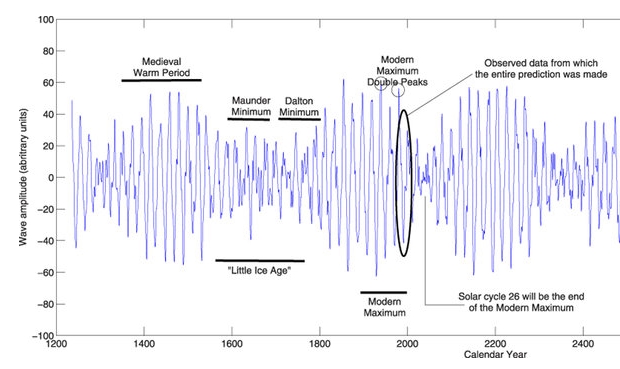
Know that the 1918–1919 pandemic influenza virus caused acute swelling of and bleeding from the lungs as people of that era who were infected suffocated within one to two days.
The second wave of the pandemic was responsible for the most deaths, due to an unusually severe hemorrhagic pneumonia.
In our present era, infected victims are experiencing similar pathologies to those of the 1918-1919 pandemic - suffering from severe acute respiratory distress syndrome that have been recorded in 50 to 75% of infections.
I continue to state that there is no such thing as 'man-made global warming,' which does not exist and is impossible according to the laws of physics and thermodynamics.
It is the Sun that governs the Earth climate and weather, also modulated by the planets.
Our planet, the Earth, lives in space, as does the Sun, Moon and planets of our solar system.
We are entering an entirely new era - featuring a new quiescent Sun that will reduce its ultraviolet and electromagnetic output, allowing for many anomalies that affect all life on Earth.

This includes the rise of pandemics, such as the novel coronavirus which is mutating. After this current one passes, there will be others to come in the future.
You can count on it.
We are all in very big trouble, but the ignorant globalists who have been pushing the lie of 'man-made global warming,' or 'anthropogenic climate change' have wasted vast resources and much valuable time in preparing for the emergence of the next mini-ice age under the Sn's powerful Grand Minimum.
I warn everyone that those who push 'man-made climate change' will not be there to help you, your family, your friends, nor your community in the years and decades to come under the power of global cooling and the Sun's Grand Minimum.
To protect yourself and your loved ones, I continue to urge everyone to plan for and to make major adjustments in how you live your lives; to greatly improve your lifestyle, your diet, hygiene and to change your geographic location in order to maximize the odds in your favor during the Sun's Grand Minimum that will dominate the decades of the 2020s, 2030s and 2040s.
Those looking to make changes in their lives, as well as to relocate from regions more susceptible to the effects of the Sun's quiescent phase and weather of global cooling can contact me at astro730@gmail.com.
As I tracked the spread of COVID-19 from Wuhan, China since December 2019, it was apparent to me with the major planetary transits - and those to come - that the virus situation would get out of hand and it is done just that, here, in the month of March.
On Wednesday evening, March 11th, President Donald Trump announced the unprecedented move that the United States will suspend all travel from Europe to the U.S. for 30 days - beginning on Friday, March 13th.
Speaking from the Oval Office to a nationwide televised audience, President Trump said:
"To keep new cases from entering our shores, we will be suspending all travel from Europe to the United States for the next 30 days."
According to the presidential order, there will will be exemptions for Americans "who have undergone appropriate screenings," President Trump said.
The restrictions will not apply to cargo and trade and cargo and it was also announced that the United Kingdom would be exempt from the new rules - meaning that British citizens can continue to travel to the U.S.
President Donald Trump speaks to a national audience on the coronavirus on March 11th.
“This is the most aggressive and comprehensive effort to confront a foreign virus in modern history," President Trump said.
Buzzfeed News reported that during his remarks, the president placed some blame on the European Union for the increase in cases in the United States.
This is related to the still widespread outbreak in Italy that has forced the Italian government to close down the entire country until April 3, 2020.
On Wednesday, March 11th, Italian officials said they would temporarily close all nonessential commercial services and shops, including restaurants, bars, and hairdressers.
"The European Union failed to take the same precautions and restrict travel from China and other hot spots," Trump added, citing his belief that the failure to do so has meant that a large number of new coronavirus clusters in the United States were seeded by infected travelers from Europe.
The coronavirus outbreak has shocked financial markets around the world.
On Wednesday, March 11th, The Dow Jones fell more than 1,500 points - erasing Tuesday’s massive rally.
As frustrated stock market bulls impatiently pine for President Donald Trump’s stimulus package, the World Health Organization (WHO) stunned the already jittery world financial markets by declaring the coronavirus a global pandemic.
Those who follow my forecast posts on Facebook already know that since early January, I have been critical of the hesitancy of WHO to declare the Wuhan coronavirus a pandemic.
Now - only here in March - does The World Health Organization finally see the light of day to justify declaring the COVID-19 coronavirus outbreak a 'global pandemic' - after two-and-a-half months of dilly-dallying around.
While the WHO had been reluctant to give assign the 'pandemic' label to the crisis - the spread of COVID-19 now had left it no choice but to capitulate to growing worldwide pressure.
Of course, the WHO proclamation saw financial markets react badly to the announcement - despite the fact that many corporations had already implemented pandemic-level protocols ranging from canceling international travel to sending workers home.
The novel coronavirus that first emerged in the Chinese city of Wuhan in autumn 2019, has infected more than 110,000+ people in at least 110 countries and territories worldwide according to my last count.
The virus outbreak has become one of the biggest threats to the global economy and financial markets.
Major institutions and banks have cut their forecasts for the global economy, with the Organization for Economic Co-operation and Development being one of the latest to do so.
Fears of the impact of the coronavirus on the global economy has rocked financial markets worldwide - with stock prices and bond yields plunging.
All three major U.S. stock market indices tumbled at least 5 percent on Wednesday, March 11th but the Dow Jones Industrial Average (DJIA) was easily the weakest.
The Dow crashed minus 1,464.94 points or 5.86% to 23,553.22.
The S&P 500 dropped 4.89% down some 140.85 points to 2,741.38
The Nasdaq lost 392.20 points, down 4.70% to 7,952.05
In the commodity sector, the price of oil slipped 4 percent after U.S. crude inventories surged by seven million barrels.
Meanwhile, the gold price failed to capitalize on the pullback in equities, dipping 1.3% percent.
My forecast on the global economy sees rebounds in April, May and June as the warming climate conditions gradually slow the pace of the coronavirus.
However, the stress on the financial markets will cause a drag on economic growth during the entire solar year of 2020 and into the coming recession I have forecasted to begin in winter 2021 in the northern hemisphere.
Everything that has happened since the Saturn-Pluto conjunction of January 2020 has influenced the present events and those to come.
The planetary transits through March will see transiting Mercury, now direct from its retrograde motion (Feb. 16 - March 9-10) re-enter tropical Pisces on March 16th.
Mercury's transit in tropical Pisces is 'debilitated,' - meaning that it is discordant and adverse.
And it is during its renewed transit in Pisces from March 16 through to April 9-10th where the Wuhan coronavirus will continue to speed up and spread throughout the globe.
The virus, officially said to have been first detected in the Chinese city of Wuhan in early December 2019 has infected more than 110,000 people. Of those infected, more than 4,000+ people have died, according to WHO data.
China is where majority of the confirmed cases still are with more than 80,000 infections reported so far.
To contain the COVID-19 outbreak, Chinese authorities locked down entire cities to restrict the movements of tens of millions people.
China has suspended nearly all business operations - moves that have slowed down the world’s second-largest economy and drag down the global economy along with it.
To make things worse, the virus has been spreading rapidly around the globe, with countries like Italy, Iran and South Korea reporting more than 7,000 cases each.
Other European countries like France, Germany and Spain have also reported a recent spike beyond 1,000 viral pathogen cases.
Latest spread of the Wuhan Coronavirus as of Wednesday, March 11th
Covid-19 spreads via contact with virus-laden droplets expelled from an infected person’s cough, sneeze or breath.
However, it can be passed on by contact with touching surfaces and/or fecal/urine matter so avoid using public toilets.
The new coronavirus causes little more than a cough if it stays in the nose and throat, which it does for the majority of people unlucky enough to be infected.
Infection generally starts in the nose.
Once inside the body, the coronavirus invades the epithelial cells that line and protect the respiratory tract.
If it is contained in the upper airway, it usually results in a less severe disease.
However, the real danger begins when the virus reaches the lungs.
If the virus treks down the windpipe to the peripheral branches of your respiratory tree and lung tissue, it can then trigger a more severe phase of the disease.
That’s due to the effect leading to pneumonia that is inflicted directly by the virus; plus secondary damage caused by the body’s immune inflammatory response to the viral infection.
One in seven patients develops difficulty breathing and other severe complications, while 6 percent become critical.
These patients typically suffer failure of the respiratory system and other vital systems, and sometimes develop septic shock, according to a report by last month’s joint World Health Organization-China mission.
The progression from mild or moderate to severe can occur “very, very quickly,” said Bruce Aylward, a WHO assistant director-general who co-led a mission in China that reviewed data from 56,000 COVID-19 cases.
Understanding the course of the disease and identifying individuals at greatest risk are critical for optimizing care for a global contagion that’s killed more than 3,700 people since emerging in central China in December 2019.
About 10-15% of mild-to-moderate patients progress to severe and of those, 15-20% progress to critical.
Patients at highest risk include people age 60 and older and those with pre-existing conditions such as hypertension, diabetes and cardiovascular disease.
As we near the vernal equinox of March 19-20, 2020, we will see an increase in sunlight, warmer temperatures and rising humidity which will help to weaken the viral pathogen's strength.
The sunlight and warmer temperatures will help to slow transmission, but populations will have to stop gathering in public places and transmitting it to others.
10 Tips on the Wuhan Coronavirus:
1) If you have a runny nose and/or sputum - then you may just have the common cold.
2) Coronavirus pneumonia causes a dry cough, but with no runny nose.
3) The new virus is not heat-resistant so it will be killed by temperatures of just 26-27 degrees Celsius (about 80 degrees Fahrenheit.)
The novel coronavirus does not like sunlight.
That's good news for the northern hemisphere because with the Vernal Equinox on the way we will see temperatures warming with increasing sunlight and then rising humidity as we go deeper into the Spring 2020 season.
4) If someone who has the coronavirus coughs or sneezes then it takes about 10 feet before the viral pathogen falls to the ground and is no longer airborne.
5) If the virus falls onto a metal surface it will live for at least 12 hours; therefore if you come into contact with any metal surface - avoid touching it. If you do touch it then wash your hands immediately and thoroughly with bacterial soap. Handles and doorknobs made out of copper are safer than plastic or metal doorknobs and handles.
6) On fabric the coronavirus can survive for 6-12 hours but washing clothes and gloves in laundry detergent will kill it.
7) Drinking warm water is effective for all viruses. Try not to drink any liquids containing ice.
8) Wash your hands frequently as the virus can only live on your hands for 5-10 minutes, but many things can happen during that time - you can rub your eyes, pick your nose, touch your mouth, etc.
9) You should also gargle as a prevention. A simple solution of salt in warm water will suffice.
10) Drink plenty of water.
a) The coronavirus will first infect the throat; so you'll have a sore throat lasting 3-4 days
b) The virus then will blend itself into a nasal fluid that enters the trachea and then the lungs, causing pneumonia. This takes about 5-6 days.
c) With the pneumonia comes high fever and difficulty in breathing.
d) That nasal congestion is not like the normal kind of congestion. You feel as you are drowning. It is imperative that you seek immediate emergency medical attention.
It has been reported that those who have recovered from COVID-19 attack on the lungs have suffered reduced lung function.
After recovery, Hong Kong's Hospital Authority revealed on Thursday, March 12th that patients who lived through COVID-19 now experience problems such as gasping for air when walking quickly.
The authority released its findings after observing the first group of discharged coronavirus patients.
Hong Kong has so far recorded 131 confirmed cases of Covid-19, including three fatalities. Of them, 74 patients have been discharged while one probable coronavirus case has also recovered.
According to Dr. Owen Tsang Tak-yin, who is medical director of Hong Kong's Infectious Disease Center at Princess Margaret Hospital in Kwai Chung, apparently doctors had already seen a dozen discharged patients in follow-up appointments.
Two to three were unable to do things as they had in the past.
“They gasp if they walk a bit more quickly,” Tsang told a media briefing.
“Some patients might have around a drop of 20 to 30 per cent in lung function [after recovery."
Tsang, who also heads an authority task force on the clinical management of infection, said these patients would undergo tests to determine how much lung function they still had. Physiotherapy would also be arranged to strengthen their lungs.
A review of lung scans of nine infected patients at Princess Margaret found patterns similar to frosted glass in all of them, suggesting there was organ damage.
However, Tsang said the long-term effect on recovered patients, such as whether they would develop pulmonary fibrosis, a condition where lung tissue hardened and the organ could not function properly, had yet to be ascertained.
He added that discharged patients could do cardiovascular exercise such as swimming to help the lungs recover gradually.
The city’s public hospitals are about to conduct clinical trials on remdesivir, a drug originally developed to treat Ebola, to see how effective it is on Covid-19.
Tsang said the drug had already been delivered to hospitals and that doctors would begin identifying suitable patients to join the trials, which were expected to begin in the middle of this month.
He stressed the drug could lead to some complications, such as affecting liver function and leading to inflammation of the blood vessels.
Covid-19 patients are being treated with Kaletra, a drug originally for HIV/Aids; Ribavirin, which was also used for Hepatitis C and the drug Interferon.
Again, I strongly advise no extended travel, cancel all conferences, vacations, non-emergency flights and cruises for the early to mid-spring of 2020 and restrict the travel of those who are sick, or who have come in contact with infected individuals. Being long large groups and crowds is not a wise idea as well.
The transmissibility of COVID-19 will continue through March and into April, so that by May 2020 the improving climate conditions will force the virus to slow down and then with more humidity and ever warmer temperatures into the mid-80 degree Fahrenheit range (86 degrees to be exact) the coronavirus virus will deactivate in the northern hemisphere with the damage done.
In the meantime, there are many more infections and deaths to come according to planetary transits in the month of March...
There have been some key developments since March 9-10th.
Among them are:
National Basketball Association Suspends 2020 Season As All-Star Player Contracts Coronavirus
After the National Collegiate Athletic Association (NCAA) announced Wednesday, March 11th that it will hold its men's and women's basketball tournaments without fans because of the ongoing coronavirus crisis another shocking announcement came from the professional National Basketball Association (NBA) later that day.
The NBA announced it has suspended all games until further notice. This followed the incredible news that a star player on the Utah Jazz who had previously joked about having the coronavirus in front of media actuated tested positive for COVID-19.
“The NBA will use this hiatus to determine next steps for moving forward in response to the coronavirus pandemic,” the NBA said in a statement.
The Utah Jazz team were in Oklahoma City to play the Thunder on Wednesday night, but the game was suddenly called off right before it was scheduled to start; just as players were already introduced and the arena was packed with fans.
A surreal scene played out on television as NBA officials discussed the situation with coaches and stadium staff as with TV commentators were confused as to what was happening.
Ultimately, the game was postponed over the public announcement system telling fans that the game would not be played due to “unforeseen circumstances." The announcer then assured
fans in the arena that “you are all safe.”
Another scheduled game Wednesday night between the New Orleans Pelicans at the Sacramento Kings was also postponed at the very last minute as Pelicans players refused to leave the locker room.
The reason given on the televised broadcast was that a referee assigned to the game, Courtney Kirkland, also had worked Monday night’s game in Utah between the Jazz and the Toronto Raptors.
Utah Jazz star player Rudy Gobert had made light of the coronavirus outbreak earlier in the week, making a point to touch all of the microphones and recording equipment in the media room during a press conference.
United Nations Closes Its New York Headquarters to Visitors
The United Nations said that it will close its headquarters in New York to the general public, suspending all guided tours until further notice.
There are no confirmed cases among staff. It follows the decision to reduce the number of staff present in the UN building.
St. Peter’s Square, Basilica Closed to All Tourists
The Vatican’s St. Peter’s Square on March 10.
In an unprecedented move leading up to Easter, the Vatican announced that St. Peter’s Square and Basilica will be closed to all tourists until April 3, 2020, according to Agence France-Presse.
Pope Francis had delivered his weekly blessing via video on Sunday to avoid attracting crowds to the square. Vatican City is home to about 600 people, including the pontiff.
The Vatican has also closed its museums until April 3rd.
Hundreds of Schools and Universities cancel classes
More than 100 schools or districts in the United State are now closed to help prevent the spread of Wuhan coronavirus.
Students attending those schools are part of the more than 360 million students worldwide who are not in school due to the virus.
"It's devastating not knowing what you're going to do last minute in regards to babysitting, daycares," one parent said. "It has impacted us, but obviously we want to make sure everybody's safe. So we're just complying like everybody else."
Lagarde Asks European Union Leaders For Rapid Action
March 10, 2020 - Deserted streets in front of the Centrale Railway station in Milan, Italy.
European Central Bank President Christine Lagarde demanded rapid fiscal action from EU leaders during an emergency call on the coronavirus outbreak, according to an official with knowledge of the discussion.
She repeated her pleas over the past months for governments to step up and help prop up growth. The call is becoming more urgent now as the viral outbreak deals a blow to the bloc’s economies.
But during the call, which was arranged to discuss the EU’s coordinated response to the coronavirus, Germany and the Netherlands did not seem keen on having a discussion on stimulus, a separate official said.
Germany reports first Coronavirus Deaths
A 78-year-old man and an 89-year-old woman have become the first coronavirus patients to die in Germany.
According to the Robert Koch Institute, Germany's national infectious disease and prevention agency, the number of infections in the country as of Tuesday, March 10th, was 1,139 - of whom 484 were in the western state of North Rhine-Westphalia.
In Bavaria, all events hosting more than 1,000 people have been cancelled until April 10, 2020 and multiple events across Germany have been postponed.
Health Minister Jens Spahn has asked residents to work from home if possible and to avoid public transport and any large gatherings.
Coronavirus Cases in Spain Top 1,600+
Spanish newspapers carry headlines on plans to stage the UEFA Champions League match between FC Barcelona and SSC Napoli behind closed doors.
Confirmed cases of the virus in Spain jumped by about a third - from 1,204 to 1,622 from 1204 in just 24 hours.
Deaths rose to 35 from 29. Spain’s national government and Madrid regional authorities agreed on Monday, March 9th to shut all schools and universities in the country’s capital.
The country’s soccer league announced that all matches in the first and second divisions will be played behind closed doors for at least two weeks.
Spain's largest bank, Santander, has asked staff at its corporate centers to work from home, remotely.
U.S. Cases Top 1,000+ in Johns Hopkins Tally
The U.S. has 1,001 confirmed cases of coronavirus, according to a Johns Hopkins University tally, which also shows 28 deaths in the country. The list includes cruise ship cases, with 46 from the Diamond Princess and 21 from the Grand Princess.
The U.S. has shifted into a new phase of its coronavirus response after efforts to stamp out sparks of an outbreak have failed. Authorities now are focusing on limiting damage.
For weeks, the biggest effect of the smattering of identified cases had been a mild sense of worry.
That changed during the first 10 days of March, and has resulted in with universities canceling classes; elementary and high schools closing for several days; new virus patients popping up in offices and nursing homes as local public health authorities pleading for people to reduce and event to totally avoid gathering in public.
California records third Virus Death
Health officials in California reported on Tuesday, March 10th, that a woman in Sacramento has died of complications related to the coronavirus, bringing the state's death toll to three.
A press release from Sacramento County Public Health described the patient as a woman in her 90s who resided in an assisted living facility.
The release said she had an underlying health condition.
At least 32 people have died of the virus in the United States. Most of the deaths have occurred in Washington state.
Two More People Die In Washington State
The Seattle & King County public health department announced two additional deaths in Washington State on Tuesday, bringing the state's death toll to 24.
One patient was a man in his 80s, and the other was a woman in her 80s, according to a statement from public health officials.
Neither patient was linked to Life Care Center of Kirkland, the nursing facility linked to 19 of the county's 22 coronavirus deaths, according to the statement.
The statement added that the public health department is working with ten facilities where either residents or employees have tested positive for the virus.
Massachusetts, Colorado, North Carolina and Florida all declare states of emergency
Officials in Massachusetts, Colorado, North Carolina and Florida declared a state of emergency on Tuesday, March 10th.
In total, 14 American states have now made emergency declarations to better respond to coronavirus.
Florida became one of fourteen states to declare a state of emergency on Monday over coronavirus concerns.
Fourteen Florida residents and at least one non-resident have tested positive for COVID-19, and two people in the state have died from the disease, according to Florida's Department of Health.
The declaration was made amid spring break for millions of Americans, and some tourism officials were worried about the outbreak's potential impact on businesses.
DeSantis said the declaration allows him to create a command structure for the state's coronavirus response, and if necessary, allows for out-of-state medical personnel to operate in Florida, CBS Miami reports.
On Tuesday, Florida's Broward County north of Miami declared its own state of emergency. The county, which includes Fort Lauderdale, has four confirmed coronavirus cases, the most of any county in the state.
New York to Close Gathering Places in NYC Suburb
The National Guard will be sent to New Rochelle to help close large, public gathering spaces in an effort to slow down the spread of the coronavirus outbreak in the suburb of New York City, said Governor Andrew Cuomo.
Referring to the one-mile square area as a "containment zone," Cuomo said the effort would focus on places where large numbers of people congregate - such as social clubs or places of worship. It wouldn’t necessarily include restrictions on movement, he said.
Gathering places, like schools and religious institutions within a one-mile radius of a highly impacted area of New Rochelle will be shut down.
The shutdown will permit National Guard troops to clean public spaces. They will also be used in Westchester County to deliver food to quarantined households, he added.
Cathay Crew Member Tests Positive For Virus
A Cathay Pacific crew member who traveled to Madrid, Spain tested preliminary positive for the coronavirus in Hong Kong, reports a local broadcaster citing unidentified people. The 22-year-old female served a confirmed patient on a flight from Madrid to Hong Kong on March 8.
Hong Kong’s Centre for Health Protection is tracing the contacts of the case involving a female patient in Dongguan, Guangdong, who took that Cathay flight from Madrid to Hong Kong on March 8, according to a government statement late Tuesday, March 10th.
The Nation of Turkey Has Its First Virus First Case & Puts Hospitals on Alert Status
Turkish Health Minister Fahrettin Koca confirmed the first case of the coronavirus in the country, saying that a male citizen tested positive for the virus.
Turkey has also canceled vacations for all its health personnel as a precaution, Koca said.
South Korea Reports 242+ New Virus Cases
South Korea - reeling from the spread of the Wuhan virus reported 242 additional infections in the previous 24 hours from March 10th to March 11th.
The increase means that the total cases in South Korea has risen to 7,755, according to a statement from the health ministry.
China Reports Just 24 New Virus Infections
China reported only 24 additional cases on March 10 - of which 13 came from Hubei province, the country’s National Health Commission said.
All the latest 22 deaths were also in Hubei. China added 19 cases a day earlier.
The United Kingdom confirms 6th COVID-19 death
The United Kingdom confirmed its sixth coronavirus death on Tuesday, March 10th with the health department giving an update on total infection numbers across England, Scotland, Wales and Northern Ireland.
The Department of Health and Social Care said that of the 26,261 people who have been tested for the disease, 373 had been confirmed to have the new COVID-19 disease cased by the virus that originated in China late last year.
The death toll of six was an increase of one from the previous day.
U.K. Health Minister Tests Positive For Virus
Nadine Dorries, a U.K. health minister, has become the first British member of parliament to test positive for coronavirus.
The Times reported she had fallen ill on Friday, March 6th and her diagnosis was confirmed Monday evening, March 10th.
The newspaper said that she attended a reception in 10 Downing Street with Prime Minister Boris Johnson on Thursday, March 5th and had met with hundreds of people in parliament.
Dorries, one of four health ministers for the U.K., said in a statement that she had been isolating herself at home since her diagnosis and that officials were working to trace all her contacts.
American Actor Tom Hanks & Actress Wife Rita Wilson Confirm They've Both Been Infected with COVID-19
Tom Hanks said that he has contracted coronavirus.
The actor confirmed on Instagram and Twitter late Wednesday, March 11th that he and wife Rita Wilson, both 63, tested positive for COVID-19 in Australia after feeling sick.
"We felt a bit tired, like we had colds, and some body aches," Hanks wrote.
"Rita had some chills that came and went. Slight fevers too. To play things right, as is needed in the world right now, we were tested for the Coronavirus, and were found to be positive."
Hanks' representative Francesca Ciuffo confirmed the diagnosis to USA TODAY.
The Oscar-winning actor has been in Australia for pre-production on Baz Luhrmann’s Elvis Presley film, in which he'll play Presley's manager Colonel Tom Parker. Production has been halted.
Hanks said he will be "tested, observed, and isolated for as long as public health and safety requires."
Warner Bros. said in a statement that the studio is working closely with Australian health agencies to identify anyone who has come in contact with the affected cast member.
The statement did not name Hanks specifically.
"The health and safety of our company members is always our top priority, and we are taking precautions to protect everyone who works on our productions around the world," the statement said.
Hanks' wife, Rita Wilson, has documented her time in Australia on Instagram over the past week, where she performed a sold-out concert in Brisbane on March 5th and at the iconic Sydney Opera House on March 7th.
Earlier this week, Wilson appeared on Australia’s "Today Show" to perform "Throw Me A Party."
She captioned a picture of her on-air performance: "It was indeed a party! Thanks for having me … Australia, you've treated me so well!!"
It's unclear when Wilson and Hanks were diagnosed with COVID-19
"Well, now. What to do next?" Hanks wrote. "The Medical Officials have protocols that must be followed … Not much more to it than a one-day-at-a-time approach, no?"
Hanks accompanied his health update with a picture of a used glove discarded in a biohazard waste bin. "We’ll keep the world posted and updated," Hanks vowed.
Australia has 128 confirmed cases of coronavirus as of Wednesday, March 11th, according to Johns Hopkins data.
To date, there have been three reported deaths from COVID-19 in Australia.
Australia to Open 100 'Pop-Up' Clinics
Speaking of Australia, that nation Down Under will open as many as 100 pop-up respiratory clinics as part of a A$2.4 billion ($1.6 billion) health package to combat coronavirus as new cases in the nation surge.
The clinics, to be staffed by doctors and nurses, will be able to cater for as many as 75 patients a day over six months, this, ahead of an official government announcement on Wednesday, March 11th.
The package will also include funds for a national communications campaign and the creation of medical teams to deliver health services via audio or video to infected people in their own homes.
Canada Announces New Financial Measures
Canadian Prime Minister Justin Trudeau is set to announce financial measures to help mitigate the effects of the widening outbreak.
Trudeau is scheduled to provide details at a 9 a.m. Wednesday (March 11th) press conference in Ottawa.
The plan would include providing faster unemployment insurance benefits to people who self-isolate, more funding for coronavirus research and financial assistance to provinces for procurement of medical supplies, according to CTV News.
FDA Suspends Inspections of Foreign Factories
The U.S. Food and Drug Administration is halting most inspections of foreign manufacturing facilities that make drugs and medical devices through April as a novel coronavirus spreads around the world.
The agency quit evaluating factories in China earlier in the outbreak. Commissioner Stephen Hahn said in a statement that the decision to expand the suspension is based on several factors, including federal restrictions prohibiting travel for government employees.
Many pharmaceuticals are produced overseas, and the FDA has come under scrutiny for failing to identify contaminants in some generic drug products.
The nation has 80,778 total confirmed coronavirus infections and the death toll stands at 3,158.
IRAN STRUGGLES TO CONTAIN CORONAVIRUS
An Iranian man in Tehran wears a mask walks past a mural displaying the national flag of Iran
With more than 7,000 confirmed coronavirus cases, Iran is currently the third most-affected country in the world outside mainland China, South Korea and Italy.
Planetary transits confirm the situation is dire as the Iranian government has shut down all of the country's schools and universities, and is disinfecting crowded spots daily.
But that has not been enough as I can confirm that health officials and medical staff have reported being silenced while experts warn that the number of infected patients could be much higher than the official count released to the world.
Moreover, the Iranian government has also been accused of withholding important information as it downplays the severity of the COVID-19 epidemic.
Just three weeks ago, in February, Iranian officials confidently said that the coronavirus epidemic would not be a problem in their country and even bragged about exporting face masks to their Chinese trading partners.
However, the World Health Organization (WHO) said that the situation in Iran is "deeply concerning."
Iranians wearing protective masks in Tehran on February 29, 2020.
Iran's Supreme Leader, Ali Khamenei, has also been seen in public wearing disposable gloves when giving speeches.
Iranian Supreme Leader Ali Khamenei makes a speech on the coronavirus outbreak in Tehran on March 3, 2020. Note the plastic glove on his left hand.
As in Italy, daily life in Iran has come to a standstill. Nearly all of Iran's schools and universities have closed down since February 23 - alongside cinemas, cafes and cultural centers.
The streets of Tehran have been largely deserted since late February into early March.
But the measures do not seem to be enough. Iran's government has been accused of downplaying the severity of the epidemic while concealing important information that could have prevented further spread of the Wuhan coronvirus.
Medics spray disinfectant in Imam Reza's holy shrine in Mashhad, Iran, on February 27, 2020.
All public places throughout Iran, including transportation stations, buses, subways and taxi stations are also being disinfected on a daily basis.
A medic sprays disinfectant to sanitize a taxi station in Tehran on March 5, 2020.
It also appears that water consumption in Iran has reached the same level that is recorded in the month of July, when people use more water due to summer heat and humidity. The great increase is water output means that the population is washing their hands far more often.
Neighboring countries like Turkmenistan, Pakistan and Turkey have either closed their borders with Iran or have initiated little to no crossings across their borders. And it appears that the nation of Iraq has also imposed an entry ban on any incoming Iranians.
An Iraqi Border Guard is seen at the gate of Shalamcha Border Crossing on March 8th between Iraq and Iran.
My contacts have told me that overwhelmed Iranian medical staff have said they are being threatened with interrogation and punishment should they provide any information about the status of infected coronavirus patients, any shortages, or fatalities to the media.
Iran's parliament said it would sentence flogging for anyone found "spreading rumors" about the virus' outbreak with up to three years imprisonment.
Apparently, what is considered to be rumors" largely comprise any information about the development of the coronavirus - rather than outright falsities.
Things took a more serious turn when it was learned that more than 20 senior officials in Iran's parliament have been infected with the Wuhan coronavirus.
They include Masoumeh Ebtekar, one of the country's vice presidents.
Iranian Vice President for Women & Family Affairs Masoumeh Ebtekar in Tehran pictured in January 2019.
Deputy Health Minister Iraj Harirchi, who was seen physically unwell at a press conference on February 25th apparently contracted the Wuhan coronavirus as well. The head of Iran's Disaster Management Organization, Ismail Najjar, also tested positive for the virus, according to state news agency Isna.
Iraj Harirchi, left, started sweating during a press conference about the coronavirus in Tehran on February 25, 2020.
News emerged that some senior officials - including a member of the Supreme Leader's senior advisory council - have died after being infected by the Wuhan coronavirus.
Mohammad Mirmohammadi, a top aide to Iran's Supreme Leader, died of the coronavirus.
In a strange twist it appears that the death toll from alcohol poisoning in Iran rose to 44 people on Tuesday, March 10th, according to state news agency IRNA.
The outbreak of the virus in the Islamic Republic is one of the deadliest outside of China, where the disease originated.
The highest poisoning toll struck in the southwestern province of Khuzestan, where it grew by 16 to reach 36 on March 10th, the agency said.
They had "drank bootleg alcohol over rumors that it would be effective in treating coronavirus and were poisoned," IRNA said. The poisoning toll in Khuzestan is higher than its 18 direct deaths from coronavirus, according to IRNA.
Seven more people have died from bootleg alcohol in the northern region of Alborz and one in Kermanshah, western Iran.
Alcohol is banned in Iran for everyone except some non-Muslim minorities, but local media regularly report on lethal cases of poisoning from bootleg liquor. Iran has scrambled to try to contain the spread of COVID-19, which has killed 291 people and infected more than 8,000 in the country.
Within Iran, authorities have been heavily criticized for not closing down the holy city of Qom, the site of the first outbreak and where millions visit every year.
Despite advice from the Ministry of Health, mosques and shrines are still holding mass services for pilgrims.
Apparently, two worshippers at the Masumeh shrine in the holy city of Qom, Iran were arrested after they were filmed licking and kissing the shrine while saying: "I'm not scared of coronavirus."
A man disinfects the Fatima Masumeh Shrine in Qom, Iran on February 25, 2020.
Meanwhile, Iran's public services are said to be fully overwhelmed.
Ambulance staff wearing full-protective masks and suits on March 2, 2020 escort a coronavirus patient to a hospital in Tehran.
For instance, a local politician for Rasht, a province northwest of Tehran, said that hospitals were full and that Iran's authorities were outright lying. The local politician added that the official death toll numbers was "a joke."
The Nation of Italy Shuts Down In Dramatic Virus Control Measures
In western Europe, the nation of Italy has suffered the most deaths from the new coronavirus outside China. There are more than 9,000 reported cases and 463 deaths blamed on COVID-19 in the country.
Public gatherings are strictly forbidden.
People have been told to work from home or they will be asked to prove to police why they're not.
Restaurants and shops were shutting their doors, and the schools and universities across the country have already been closed.
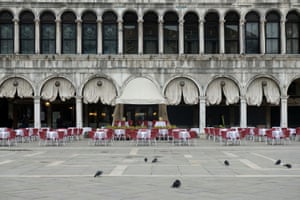
An empty restaurant in a deserted St Mark’s Square, Venice
Violators of the new rules risk up to three months in jail or fines of $225.
"We have run out of time," Prime Minister Giuseppe Conte said Monday as the measures were announced. "We're having a growth in infection and deaths ... the whole of Italy will become a protected zone."
Officials in the hardest hit northern region, which has been under quarantine since Sunday, said hospitals are "on the verge of collapse."
But there were signs the clampdown was working:
In the northern regions where quarantines have been in place for a couple of weeks, the number of cases was going down.
On Wednesday night, March 11th, Italy then further tightened its coronavirus quarantine on - ordering all bars, restaurants; hairdressing and beauty salons to close, after reports of the highest daily increase in deaths of any single nation outside China since the outbreak began.
In a televised address to the nation, Conte said that all shops would be closed except for supermarkets, food stores and pharmacies, but that all other companies must close all their non-essential departments.

The Porta Susa railway station in Turin
"Thank you to all Italians who make sacrifices. We are proving to be a great nation," Conte said in his nine-minute broadcast.
"We will only be able to see the effects of this great effort in a couple of weeks," he added, referring to the daily bulletins announcing the number of new cases and fatalities.
On Wednesday the death toll in Europe's worst-affected country jumped by 196 in just 24 hours to 827 recorded deaths.
This, as confirmed cases across Italy rose to 12,462 from the previous 10,149.
The latest measures take effect Thursday, March 12th and will remain in place until March 25, the prime minister's office said.
"The country needs responsibility from all of us, the responsibility of 60 million Italians that are making small and large sacrifices every day," Conte said.
The existing restrictions on public gatherings and travel had already emptied streets amid the forced closure of schools, universities and museums. Many other businesses had also shut.
Cathedrals posted hand-written notes cancelling mass and cafes apologised to their regulars for having to turn them away.
A traveler wears a mask as he waits inside Rome’s Termini train station.
The central streets of Rome were deserted Wednesday evening and buses that are usually crammed with commuters ran almost empty.
"I can't even recognize Rome now," 30-year-old Muscovite Yekaterina said while posing alone for a photo by the usually bustling Trevi Fountain in the heart of Rome.
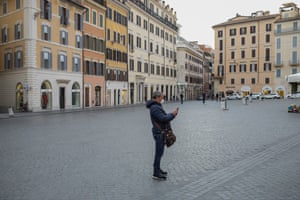 A man in the deserted Piazza Di Spagna in Rome.
A man in the deserted Piazza Di Spagna in Rome.
Under the latest measures, trains and urban public transport will continue to operate, as will essential services such as plumbers, mechanics and petrol stations.
Such measures are taking a heavy toll on Italy's economy and Conte announced earlier set aside 25 billion euros ($28.3bn) to support firms and families and soften the effect of the virus.

A general view of the Olympic Stadium in Rome after all sports events have been suspended.
Elderly people are particularly susceptible to the virus and Italy has the oldest population in Europe with nearly a quarter of people aged 65 or over.
Most Italians appear to be respecting the most severe controls placed on any Western nation since World War II.
An opinion poll by the Ixe agency showed 89 percent of Italians backed their authorities' draconian measures, with 78 percent saying they would support even tougher steps.
People have been told to keep at least a metre (three feet) from each other and handshakes are frowned upon. Italians have found themselves starting to talk to each other a few steps apart - while often laughing about the regulations along the way.
"As soon as the emergency has passed, we will organise a free carbonara day for doctors, nurses and healthcare workers," a closing note by a restaurant in Rome's popular Trastevere neighbourhood said.
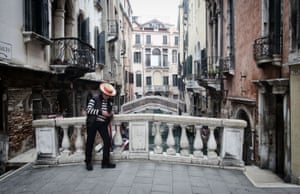
A gondolier without any customers in deserted Venice.
Deaths from the new coronavirus in Italy have soared in recent days,
with the country reporting 463 total fatalities from the virus, out of 9,172 confirmed cases, as of early March.
But why are deaths in the country so high?
Outside of mainland China, Italy now has the highest number of deaths in the world from COVID-19, the disease caused by the new coronavirus.
And the country's fatality rate from COVID-19 - at 5% - is much higher than the global average of 3.4%, according to the World Health Organization.
It appears that one factor affecting Italy's death rate may be the age of its population.
Italy has the oldest population in Europe, with about 23% of residents 65 or older. The median age in the country is 47.3 years - compared with 38.3 in the United States.
Many of Italy's deaths have been among people in their 80s and 90s, a population known to be more susceptible to severe complications from COVID-19.
The overall mortality rate is always going to depend on the demographics of a population, said Aubree Gordon, associate professor of epidemiology at the University of Michigan.
In this case, the reported mortality rate is not "age standardized," which is a way to adjust for the underlying demographics of a population, she said.
Given Italy's older population, "you would expect their mortality rate to be higher on average, all else being held equal," compared with a country with a younger population.
In addition, as people age, the chances of developing at least one condition that weakens their immune system, such as cancer or diabetes - increases, said Krys Johnson, an epidemiologist at the Temple University College of Public Health.
Such conditions also make people more susceptible to severe illness from coronavirus, she said.
Another issue may be the number of people in a given area who require medical care - having many severely ill people in a single region could potentially overwhelm the medical system.
That indeed was likely the case in Wuhan, China, where the coronavirus outbreak began and which saw the majority of COVID-19 cases in China.
A recent report from WHO found that the fatality rate was 5.8% in Wuhan, compared with just 0.7% in the rest of the country.
Is Coronavirus Causing More Worry in Central Asia's Turkmenistan?
A mystical place in central Asia - the nation of Turkmenistan, must, by all accounts have to be dealing with the impact of the coronavirus due to its proximity in Central Asia with the infected country of Iran to its south.
Hopefully, the leaders of Turkmenistan have been prudent on minding planetary transits to ward off the spread of the COVID-19 virus but it does appear so far that they have.
It does appear to this mundane astrologer that indeed, President Gurbanguly Berdymukhamedov to has gained the upper hand in fighting the spread of the coronavirus and in so doing saved his nation from the viral pathogen infection that has been raging in many other nations worldwide.
There have been some negative reports on the handling of the coronavirus by Berdymukhamedov's government, such as this March 3rd report from EurasiaNet News that emerged with the title:
'Borders Close, food prices jump and the President Prays.'
Despite the negative headline, when it comes to the Wuhan coronavirus, it does indeed help for everyone - including the president of the nation - to indeed pray. That is a very good thing.
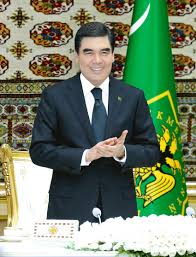 Turkmenistan President Gurbanguly Berdymukhamedov
Turkmenistan President Gurbanguly Berdymukhamedov
Anyway, the Eurasia Net March 3rd news report reads like this:
"Coronavirus anxiety is reaching fever pitch in Turkmenistan, which has reacted by closing nearly all its land borders.
RFE/RL's Turkmen service, Radio Azatlyk, reported that the border with Afghanistan was shuttered on February 26.
The border with Iran, which has a larger confirmed number of coronavirus-induced COVID-19 cases, was closed earlier last week, possibly as early as February 24, according to the Vienna-based Chronicles of Turkmenistan.
Tehran requested that Ashgabat at least grant transit access to freight, but the plea appears to have fallen on deaf ears.
The Uzbek border has been shuttered since the start of February.
The entry point from Kazakhstan may still be open, but there have been no reports to confirm that either way.
An Azatlyk correspondent reported on March 2 that passenger traffic at the Turkmenbashi port on the Caspian Sea has been halted.
Turkmen.news noted on February 27 that Turkmenistan Airlines flights from Ashgabat to Istanbul were flying empty - with only inbound travelers using the route.
Turkmen citizens were reportedly barred from flying to Istanbul on other carriers as well.
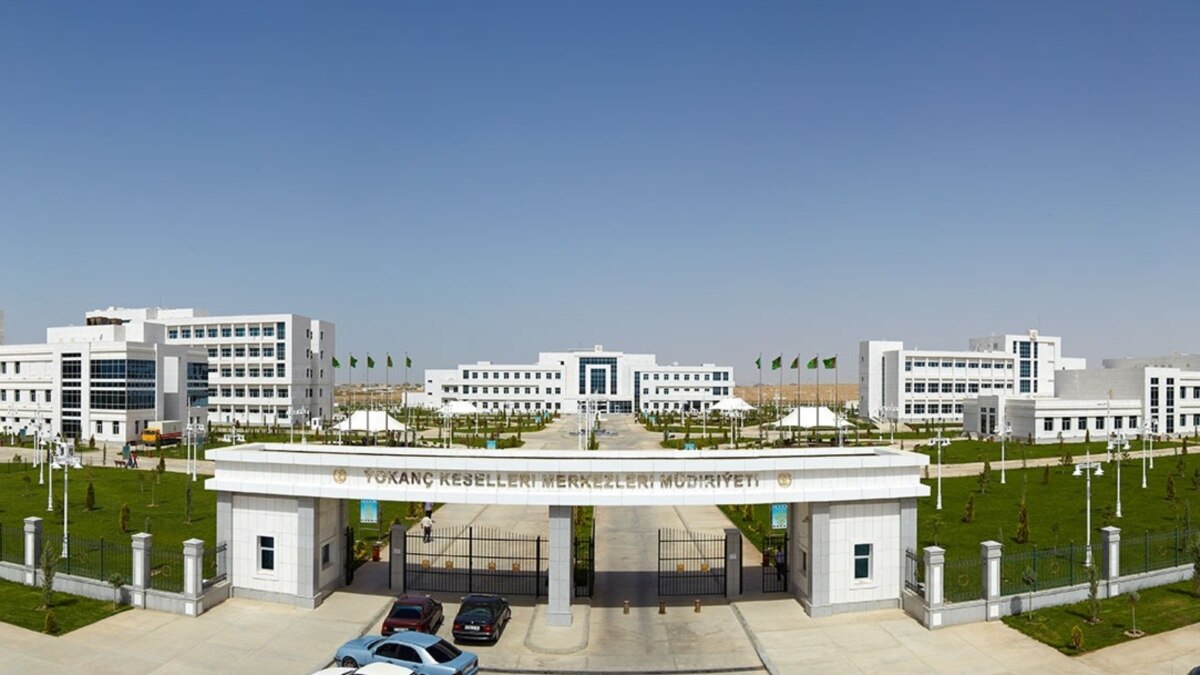
The Choganly hospital near Ashgabat -- ground zero for the coronavirus in Central Asia?
These last developments appear connected to the coronavirus scare, but one cannot be sure. Turkmenistan so frequently imposes arbitrary travel restrictions on its own population that the rationale is never straightforward.
President Gurbanguly Berdymukhamedov, a dentist by training and an avid champion of traditional Turkmen herbal remedies, has allowed the issue to be addressed publicly, in contrast with his usual head-in-the-sand strategy.
Berdymukhamedov met on February 25 with Deputy Prime Minister Purli Agamyradov, who has been tapped to lead a commission charged with halting the virus, and with Health Minister Nurmuhammet Amannepesov to discuss options.
Berdymukhamedov noted that the World Health Organization, or WHO, has warned that the spread of COVID-19 could escalate into a pandemic and announced that quarantines and other security measures would be put in place.
While some countries are restricting entry to people arriving from coronavirus hotspots, Turkmenistan has gone a step further and is banning its citizens from going to those same countries.
State media claimed that medical institutions have been provided with disinfectants, antiseptics and various unspecified medicines, and that doctors have been given protective equipment.
It is not clear from state media coverage whether this defensive armory extends to face masks.
Chronicles claimed that a woman was detained in Ashgabat for wearing a face mask and quizzed by police if this meant she mistrusted the measures adopted by the government.
She was purportedly then fined 249 manat (around $71 at the bogus official exchange rate.) But how successful is this prevention strategy proving?
Depends whom you believe.
Amannepesov, the health minister, says that Turkmenistan has yet to detect a single case of the disease – a situation analogous to the other four countries in ex-Soviet Central Asia.
Amsterdam-based outlet Turkmen.news had initially carried dubiously sourced reports of a diagnosed case, but there is no evidence that claim was reliable.
Given that Turkmenistan exercises intense self-isolation already, there is every reason to imagine the impact on the economy might be minimal, although Turkmen.news suggests on the contrary that this crisis is reviving food shortages, reports of which have tapered off in recent months.
The outlet has reported that the price of a liter of cottonseed oil in private shops has doubled and that supplies of this commodity have run dry in state stores. Chronicles has similar accounts.
The cost of chicken meat and many staple groceries, such as potatoes, has gone up, according to Azatlyk.
In the Mary province, authorities have halted the practice of selling flour at subsidized prices to breast-feeding mothers, apparently on the grounds that babies do not eat bread, even though their mothers do.
In that same province, state stores have cut the quota of state-subsidized bread to one loaf per buyer, down from two previously.
Chronicles says that local officials have held meetings with a gathering of village elders to discuss what they have characterized as temporary shortages and urged the public not to believe “lying media” based abroad - a clear reference to the likes of Turkmen.news and Chronicles.
For safe measure, Berdymukhamedov is paying some lip service to God.
On February 28, he traveled to the city of Mary to pray at a building named immodestly after himself, the Gurbanguly-Hajji Mosque.
A report on this visit notes that the mosque was built in 2009 at “the request of residents,” and was named in the president’s honor, likewise “in accordance with the wishes of believers.”
Berdymukhamedov performs these perfunctory forays into mosques on occasion to display his supposed religious convictions, although Islam is, like all other spheres of life in Turkmenistan, ferociously policed and regimented.
Singapore-based Yug-Neftegaz, a company with extensive experience in Turkmenistan and links to businessmen from the Ukrainian cities of Donetsk and Odessa, has got a $70 million contract to help enhance productivity at 80 wells owned by state oil company Turkmenneft.
The upgrade will enable those wells to produce an additional 105,000 tons of oil. The drilling of an additional six wells will add 54,500 tons of oil to the mix.
The government’s official oil and gas sector website describes this as an investment, as if to suggest the money would be coming from abroad, when it is actually Turkmenneft that will be footing the bill.
Berdymukhamedov has delivered a fresh shove to the government’s digitization campaign.
On February 27, he signed a decree requiring government departments all the way up and down the bureaucratic chain, local and national, as well as anybody registering an enterprise, to create an electronic document management system.
This should all be done by January 2021, he has decreed.
Given the scale of what Berdymukhamedov seems to be urging, this is a remarkably short timeframe and there is a good probability the whole exercise will culminate in tardiness or a fudge, and that well-placed IT contractors will earn handsomely.
At the same time, making the jump from paper to digital will be a boon to the would-be government leakers of the future, so it is not inconceivable that this could inadvertently usher in transparency by the back door.
A freshly imposed round of U.S. sanctions against Iran have tangentially wrought some collateral damage to Turkmenistan.
Russian Railways said on February 25 that it has decided, in light of the broadened sanctions, to pull out of a 1.2 billion Euro ($1.3 billion) project to electrify the rail link between Garmsar, which is outside Tehran, and Inche Burun, which is right by the Turkmen border, Interfax news agency reported.
This project was meant in part to increase the speed and capacity of the route, which plugs more widely into the International North-South Transport Corridor, of which Turkmenistan was meant to be a peripheral beneficiary.
On a more positive diplomatic note, Turkmen Foreign Minister Rashid Meredov was one among a constellation of regional envoys to attend the landmark signing of a U.S. - Taliban peace deal in Doha, Qatar.
The foreign dignitaries present were all either from nations bordering Afghanistan or involved as interested parties.
Ashgabat is clearly invested in the success of any peace initiative in Afghanistan as a conflict-free outcome is of paramount importance to the success of its serially postponed Turkmenistan-Afghanistan-Pakistan-India, or TAPI, natural gas pipeline project.
This pipeline enjoys considerable tacit support from the United States, as attested to recently by a long and optimistic article published on February 24 by the Central Asia propaganda arm of the Department of Defense.
"The deadlines for commissioning TAPI will be pushed back, but the project ... will still be implemented," Rovshen Khallyyev, a technical specialist at TurkmenGaz, told Caravanserai, which manages somehow to get hold of Turkmen government officials no other media can reach.
While in Doha, Meredov met with his Qatari counterpart and exchanged vague bromides about the need to intensify bilateral cooperation.
On a practical note, talks covered preparations for an upcoming Intergovernmental Turkmen-Qatari Commission on Trade and Economic Cooperation.
But while investment is welcome, trade less so. Berdymukhamedov on February 28 approved new customs tariffs designed to favor domestic producers by “protecting their interests and increase the competitiveness of their products.”
A couple of days later, he fired deputy minister of trade and foreign economic relations Karar Mammadov for “serious shortcomings in his work.”
Reading between the lines, it looks like the import-substitution panacea – a policy the International Monetary Fund has specifically warned against – is not proving as effective as had been hoped.
Shocking Emails:
Norwegian Cruise Ship Company Pressures Sales Team To Mislead Customers About Coronavirus
Back in autumn 2019, I warned people not to take extended travel through the fall 2019 through spring season of 2020; however, as people tend to do - ignore so they can do whatever they want despite the influences of planetary transits - the emergence of the COVID-19 coronavirus has caused havoc in the travel and cruise ship industry.
On March 11th, Alexi C. Cardona of the Miami New Times writes,
"Cruise ships have long been called floating petri dishes. And COVID-19, the illness caused by the novel coronavirus, means rough seas ahead for the cruise industry.
In the wake of the epidemic, a Norwegian Cruise Line (NCL) employee in South Florida tells New Times some managers have asked sales staff to lie to customers about COVID-19 to protect the company's bookings.
"These discussions take place every day. And even during our department meetings, managers tell us that it isn't a big deal, that more people die from other things," says the employee, who asked to remain anonymous for fear of retaliation.
"[They're] constantly underestimating it."
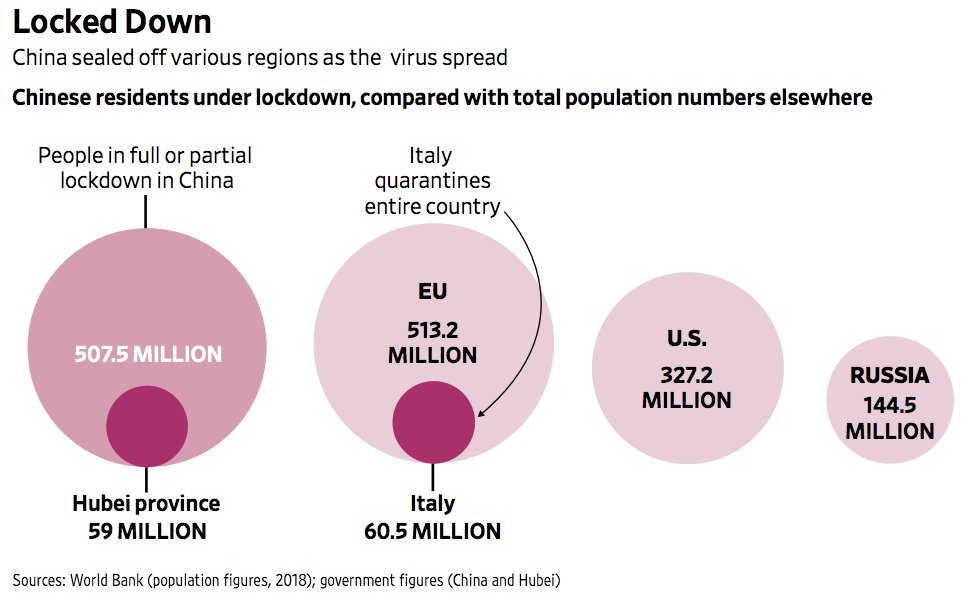
Emails leaked to New Times show that a senior sales manager at NCL's Miami office came up with canned responses for the sales team to use if potential customers expressed concerns about COVID-19.
"Team," the email reads in part,
"these are one liner's [sic] to help you close your guests that are on the fence.
DO NOT USE THESE unless the coronavirus is brought up."
Some of the lines in the script pressure a fictitious customer to book a cruise immediately to avoid paying more later.
"Mr Becker," the line reads,
"due to the Coronavirus we have cancelled all of our Asia cruises on the Norwegian Spirit. This has caused a huge surge in demand for all of our other itineraries.
"I suggest we secure your reservation today to avoid you paying more tomorrow."
Other script lines simply reassure customers not to be afraid.
"The only thing you need to worry about for your cruise is do you have enough sunscreen?" one of the suggested talking points reads.
Some of the recommended responses are blatantly false.
For instance,
Cruise bookers were instructed to tell potential customers that coronavirus is not a concern in warm Caribbean climates.
"The Coronavirus can only survive in cold temperatures, so the Caribbean is a fantastic choice for your next cruise," one talking point reads.
"Scientists and medical professionals have confirmed that the warm weather of the spring will be the end of the Coronavirus," reads a second.
Another line says coronavirus "cannot live in the amazingly warm and tropical temperatures that your cruise will be sailing to."
According to the Centers for Disease Control and Prevention (CDC) seasonal flu viruses exist year-round in the United States, but are most prevalent in the fall and winter.
The common cold is more widespread in winter and spring, although it can also be diagnosed at any time.
Spring typically marks the end of flu season in the States, reportedly because of increasing temperatures and humidity.
"That means the coronavirus has plenty of opportunity to infect people and get passed along."
Norwegian didn't respond to multiple requests for comment.
But after New Times sent those requests, a manager emailed some employees to say this publication was "working on a nasty story" and that the company "won't be responding as agreed" to the request.
An employee leaked the email to New Times. The same manager emailed staff saying "the Media is trying to trick employees at cruise lines to say stuff about corona" and warning them to be careful.
Other communications leaked to New Times show the cruise line's managers are trying to find the employee who "ratted and lied" about the company.
It's too soon to know much about COVID-19, such as exact death and survival rates and whether people can develop immunity after recovering from the virus. The vast majority of people who've tested positive for the virus have survived.
Given the uncertainty, the NCL employee who spoke with New Times has concerns about managers spreading misinformation internally.
For example, one sales manager sent an article from the website Education Magazine that pushes anti-vaxxer theories and claims that media coverage of pandemics is full of "hidden motives."
The article further states the media "often practices Hypodermic Needle Theory to inject messages directly into the brains of a passive audience."
"It's straight-up hoaxes," the employee tells New Times.
The worker also says NCL seems more concerned about its profits than the health and safety of travelers - and some sales staffers now feel pressured to persuade customers not to cancel their trips. Some customers, despite their worries, have caved and kept their reservations.
Many others are canceling cruises even if it means losing thousands of dollars.
The employee who spoke with New Times says they have not personally used any of the "one-liners" with clients because they feel uncomfortable doing so.
They spent most of a recent workday taking calls from customers wanting to cancel.
"We are hardly selling anything," the employee says. "Sales are at serious lows."
Members of the sales team lose any commission on a booking if the cruise is canceled, according to the employee.
They are required to meet daily quotas - about 150 calls to potential customers, five hours on the phone, and three to five bookings.
"If you don't hit quota, you will absolutely be fired," the employee says. "No exceptions for [the] current virus situation. You may be put on a personal improvement plan for 30 days, but [that] basically means you're done."
The employee says managers are trying to downplay the disruption in sales "at all costs."
Jim Walker, a Miami maritime attorney who writes about the cruise industry, says cruise lines regularly issue talking points to the media, travel agents, and sometimes employees to "put a happy face" on stories during crisis situations.
Walker says what Norwegian is reportedly asking employees to tell customers about COVID-19 is unethical at best.
"There's a lot of funny business like this that's going on," Walker says. "It's kind of shocking to hear but doesn't particularly surprise me."
Walker says the cruise industry wants people to believe that now is the best time to go on a cruise and that the industry is taking their concerns seriously. But he doesn't believe that's the case.
"The reality is they've never had good protocols," he says. "They're telling people what they want to hear."
France 24 News report:
' Floating Prison’
Life on board coronavirus cruise ship, can be seen here ->>
Theodore White is a mundane astrologer and astrometeorologist who advises clients in over 60+ nations. Providing in-depth consultations on a wide range of personal, professional, business and economic matters; as well as producing advanced climate and weather forecasts; he can be contacted by email at astro730@gmail.com.
/arc-anglerfish-arc2-prod-dmn.s3.amazonaws.com/public/GN3YFWLYFVDWZBZE2KENJQQHZY.jpg)




:no_upscale()/cdn.vox-cdn.com/uploads/chorus_asset/file/19785047/6b_micelle_hr.jpg)
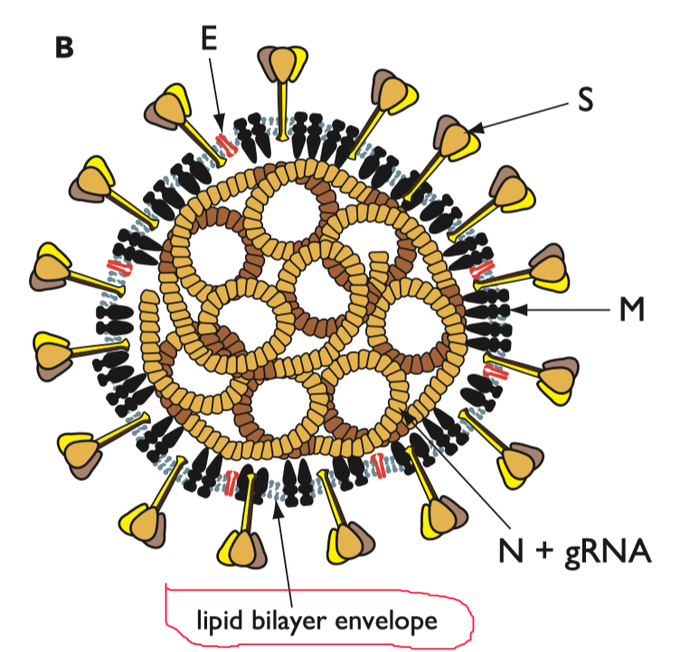




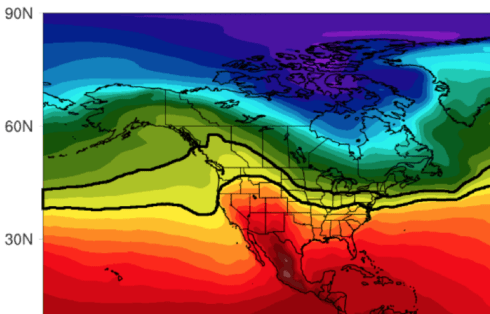


:max_bytes(150000):strip_icc()/difference-between-epidemic-and-pandemic-2615168-01-c829c2e4591f47f9a3e5cd39687be4a7.png)




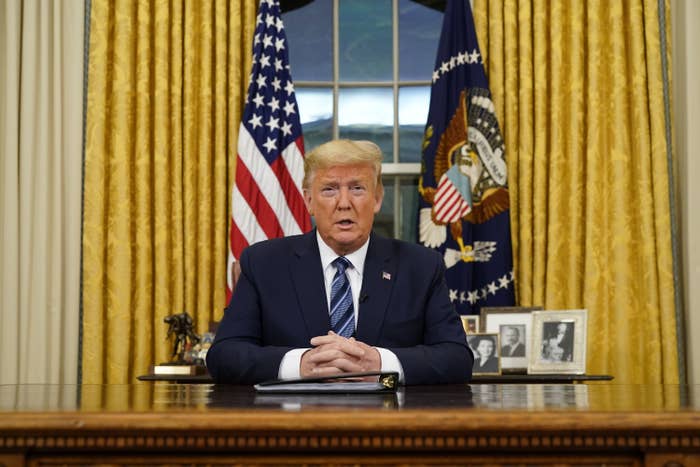

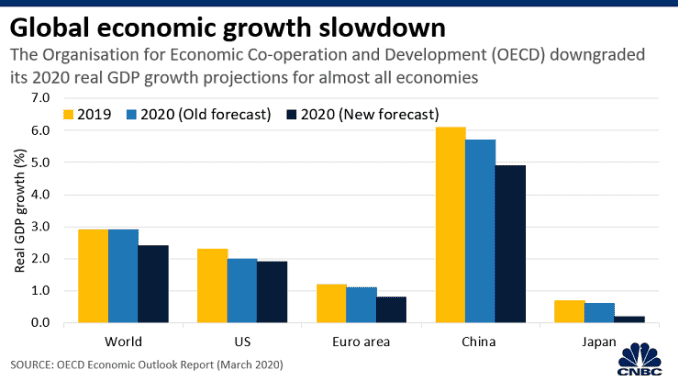


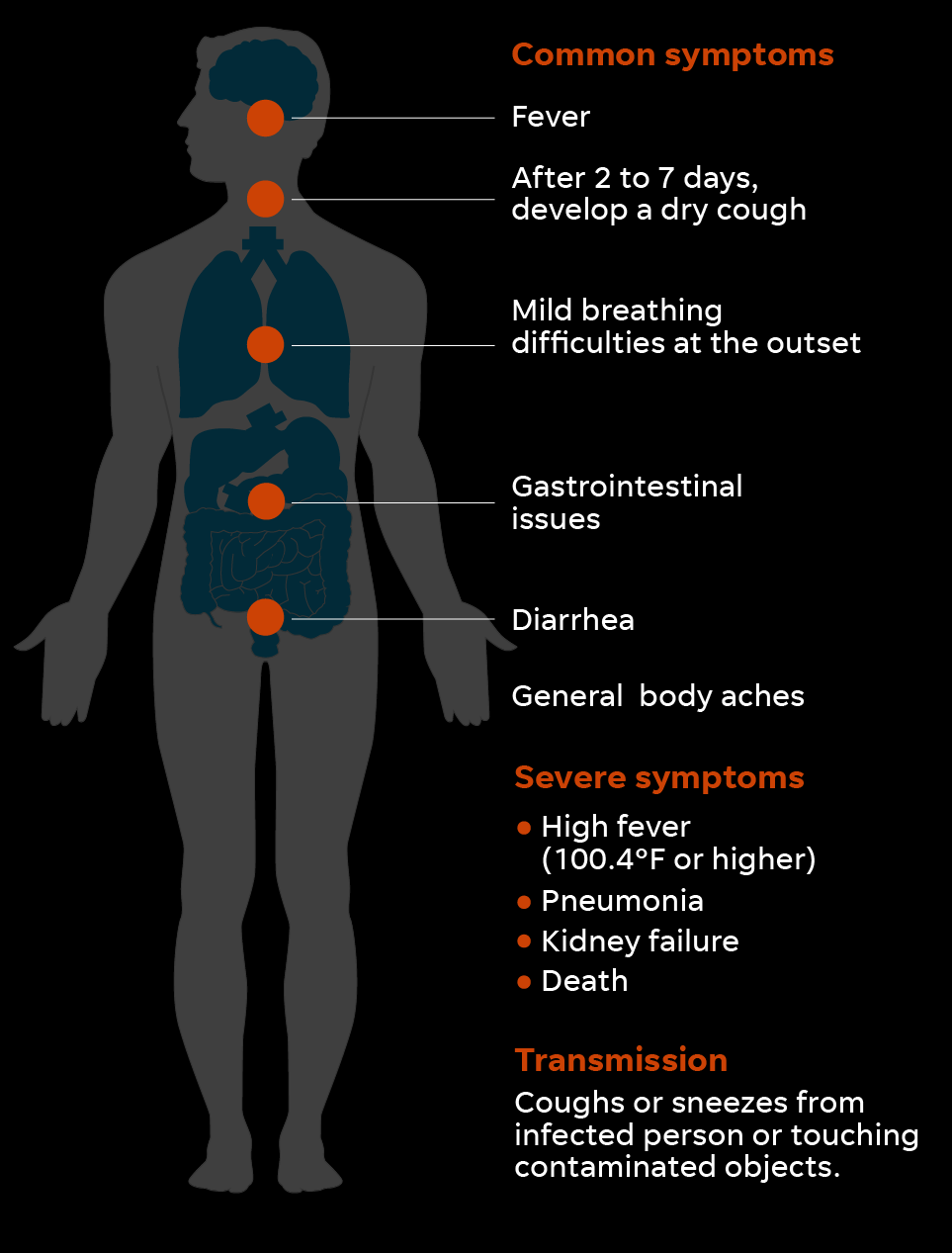
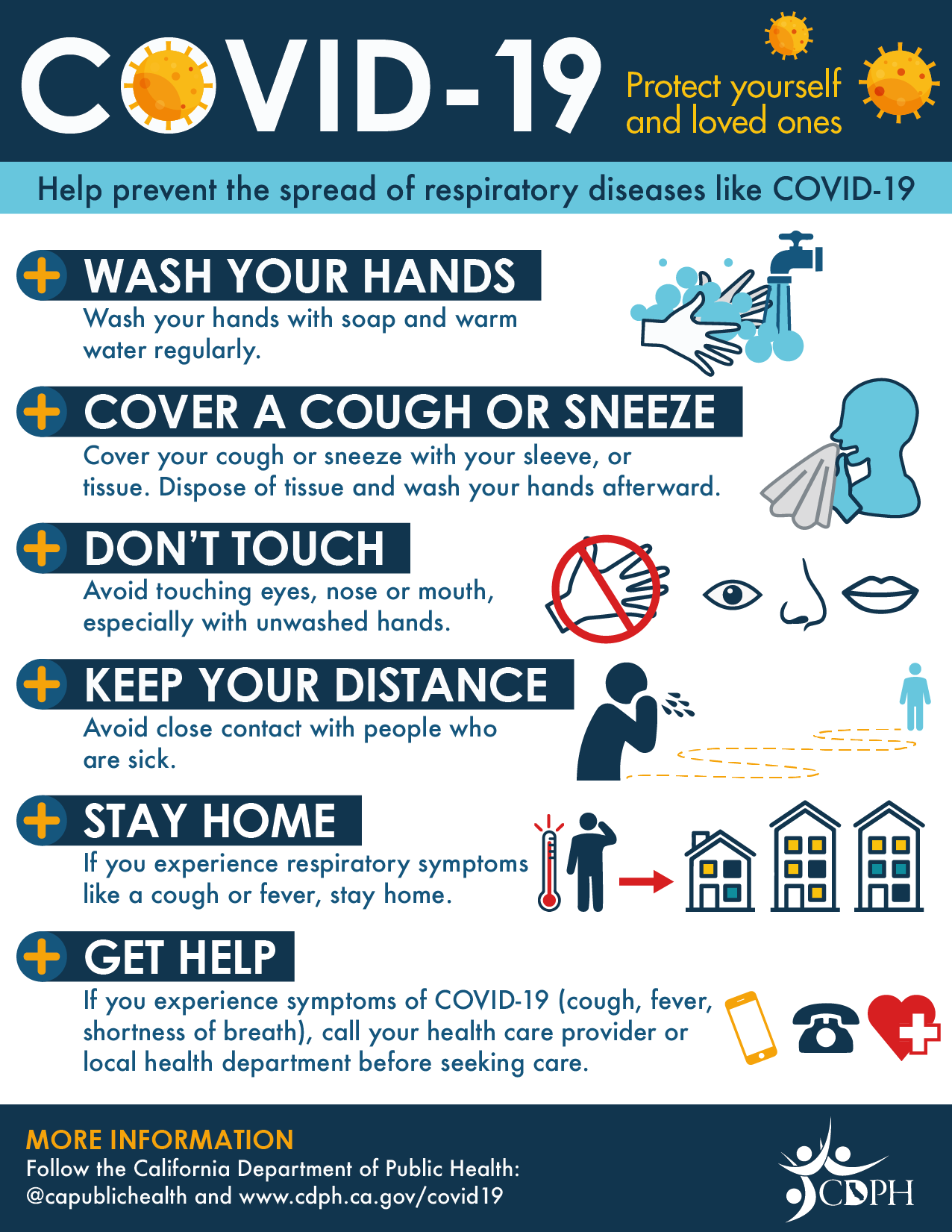
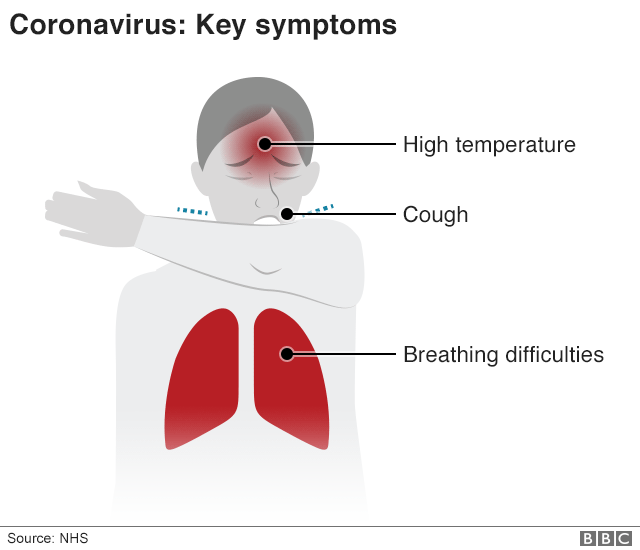


/cdn.vox-cdn.com/uploads/chorus_image/image/66487385/1206313680.jpg.5.jpg)





![Italy tightens lockdown after coronavirus death toll soars Italy has tightened a quarantine that has already emptied its usually crowded city streets [Andreas Solaro/AFP]](https://www.aljazeera.com/mritems/imagecache/mbdxxlarge/mritems/Images/2020/3/12/ec4d5c3dcbad4b5a8bcf707082b3f4e9_18.jpg)









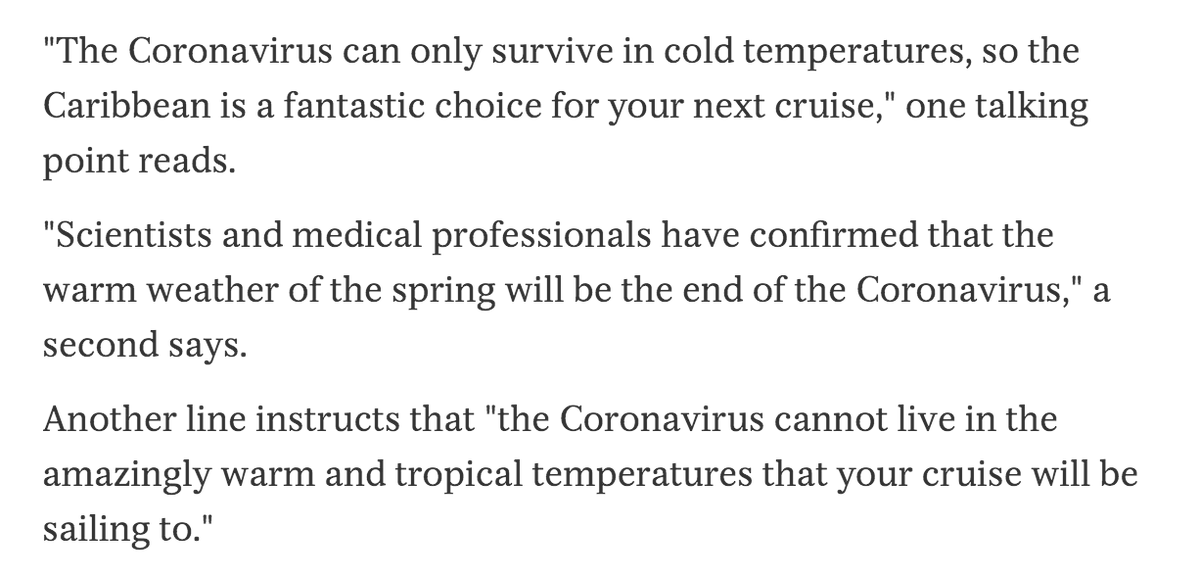













































1 comment:
Your work is so impressive, so generous and giving. I salute you and I thank you.
Post a Comment